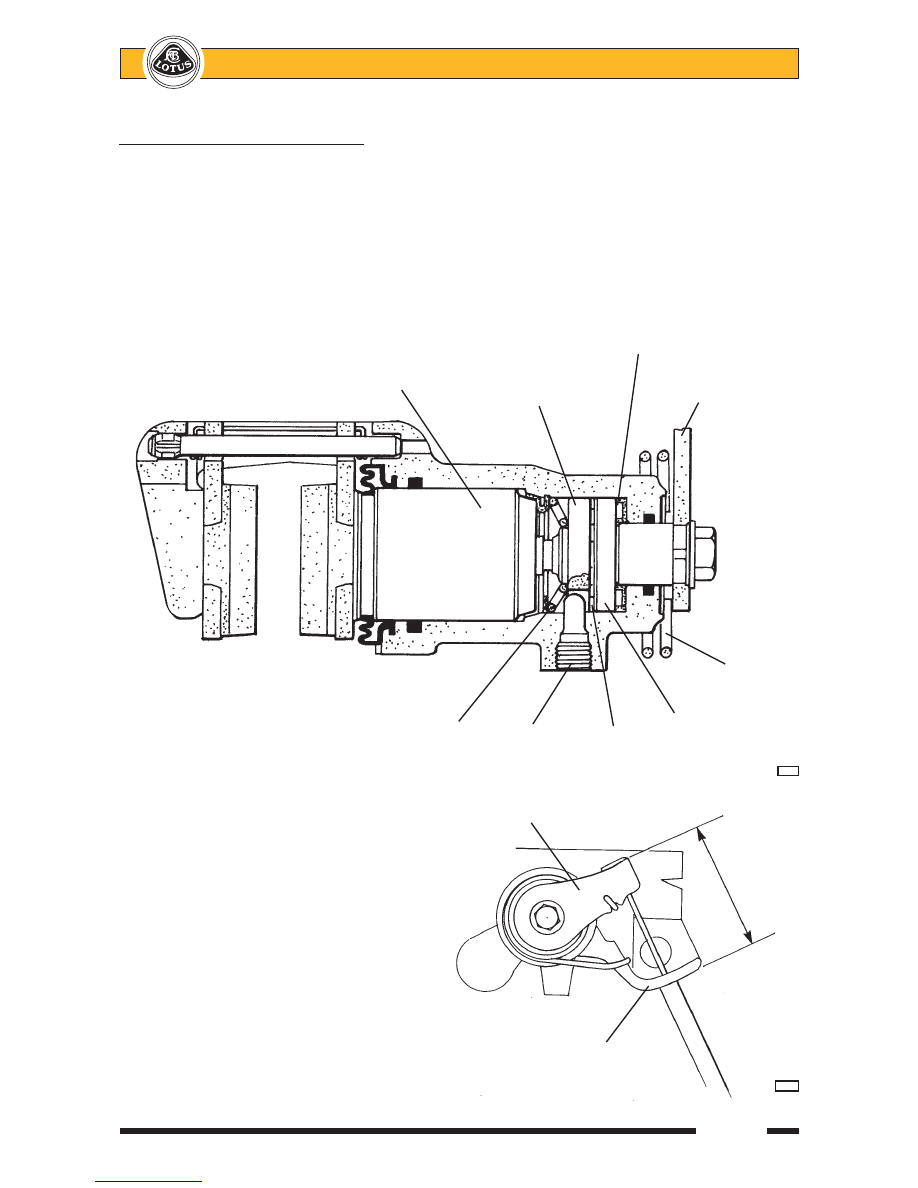Lotus Eleven/Elise/Exige. Manual - part 64

Lotus Service Notes
Section JJ
Page 9
JJ.6 - PARKING BRAKE MECHANISM
Operation of the parking brake lever applies a pull to a short link cable which connects via a horseshoe
compensator to the centre of a single cable linking the two rear callipers. At each calliper, the cable connects
to a lever which operates the hydraulic piston by mechanical means:
Movement of the calliper lever causes rotation of one of a pair of steel discs, rotation of the other being
restrained by a stop bolt in the cylinder. Hardened balls housed in ramps machined in the discs, force the discs
apart, and in so doing, apply an axial force to the piston via a screwthread and nut. The nut is restrained in the
piston by a one way clutch which grips the nut when the parking brake is applied, but allows it to turn when the
mechanism relaxes, or when the piston is operated hydraulically by the footbrake. In this way, the mechanical
mechanism is adjusted automatically to compensate for pad wear.
For the auto adjustment system to
function correctly, it is essential that each
calliper parking brake lever is allowed to return
fully when the brake is released, and is not
prevented from doing so by maladjustment of
the parking brake cable. To check that the
calliper levers are fully returned; with the
parking brake ‘off’, measure the distance
between the cable abutment and calliper lever
as shown.
Needle roller
thrust bearing
Piston
assembly
Driven
Operating
disc
lever
Lever
return
spring
Driving
Return
Stop
Balls
disc
spring
bolt
in ramps
j126
Calliper park brake lever
76 mm
Cable abutment
139